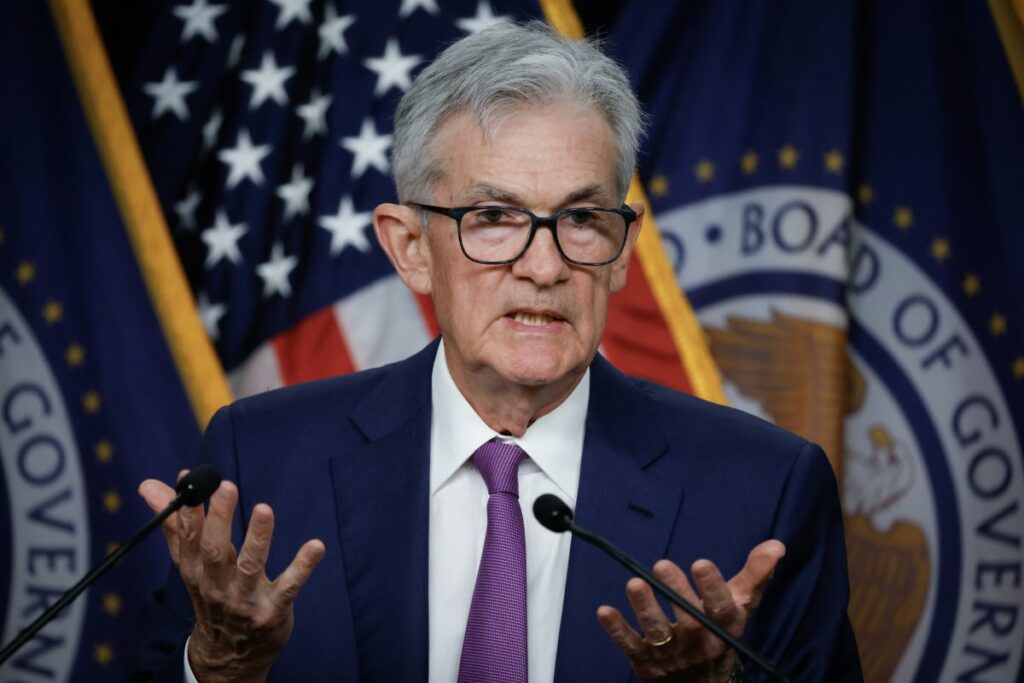The Federal Reserve is expected to cut interest rates on Wednesday for the first time since 2020, a tacit acknowledgment that the country’s fight against inflation is all but won and that concerns about a softening labor market now outweigh lingering worries about prices.
By virtue of the timing, the Fed’s decision — which comes down just after 2:00 p.m., at the end of a regularly scheduled meeting of its governors — will thrust the central bank into the teeth of an election cycle in which the economy is regularly cited as voters’ number one concern. Former president Donald Trump has said the Fed’s move to lower rates, and thus borrowing costs for consumers, is “something that they know they shouldn’t be doing” so close to an election.
But not all of Trump’s supporters in the Republican party agree.
Politico reported this week that several GOP members of Congress believe the Fed should cut interest rates regardless of the political calendar.
Federal Reserve Bank Chair Jerome Powell announces that interest rates will remain unchanged during a news conference at the bank’s William McChesney Martin building on May 01, 2024 in Washington, DC.
Federal Reserve Bank Chair Jerome Powell announces that interest rates will remain unchanged during a news conference at the bank’s William McChesney Martin building on May 01, 2024 in Washington, DC.
Chip Somodevilla/Getty Images
Senator Thom Tillis of North Carolina told the news outlet that there is an “increasing body of work” suggesting it’s time to cut rates.
“That’s the way the Fed should operate. People could call it political. All I care about is how it’s affecting working families. And they need help right now,” Tillis said.
Senator John Kennedy of Louisiana agreed, telling Politico: “It is time for a rate cut. This economy, particularly the labor market, is softening very, very, very quickly.”
Representative Dan Meuser, a Pennsylvania Republican, told the news outlet that the Fed must “put the greater good ahead of looking political.”
Newsweek reached out to spokespersons for each of those lawmakers for comment via email.
GOP strategist Brent Buchanan blasted the Fed’s expected move, saying in an interview that Republicans may be willing to disagree with Trump over interest rate cuts because macroeconomic policy is more impactful on the presidential race than downballot Senate and House races.
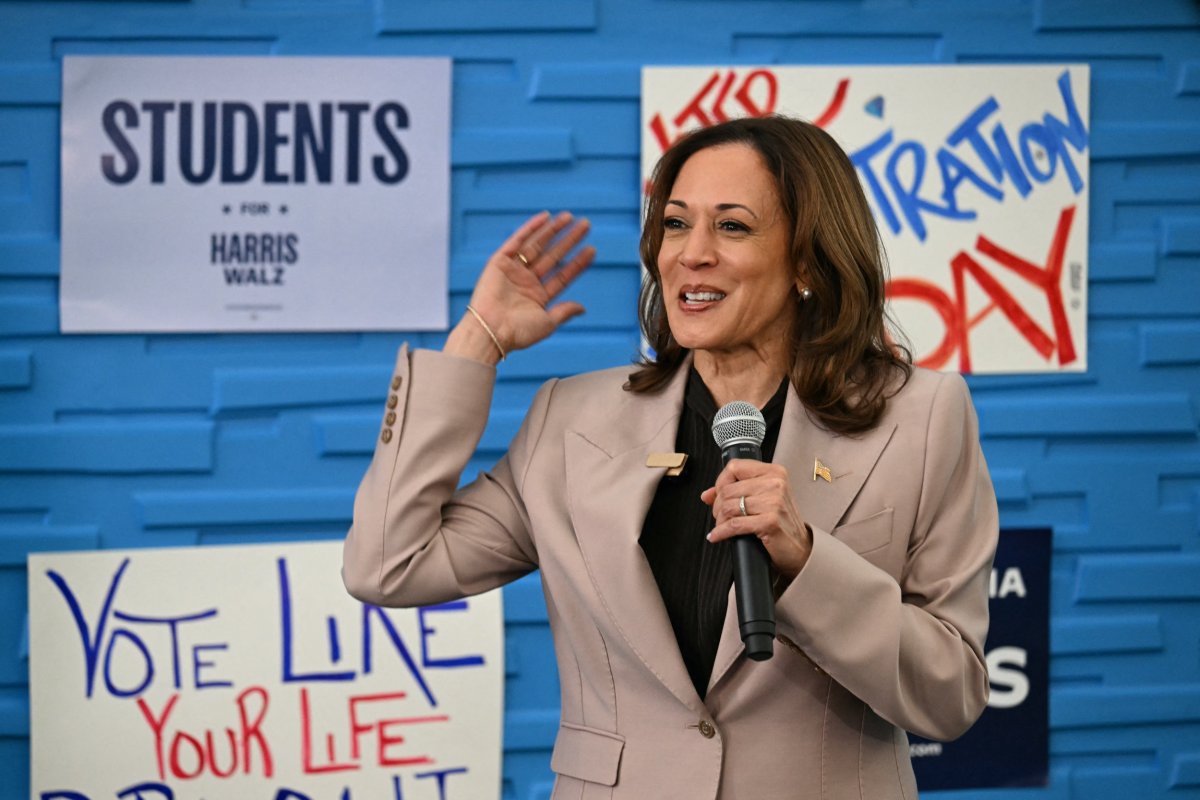
US Vice President and Democratic presidential candidate Kamala Harris speaks during a stop at the Community College of Philadelphia during a voter registration training session, in Philadelphia, Pennsylvania, on September 17, 2024.
US Vice President and Democratic presidential candidate Kamala Harris speaks during a stop at the Community College of Philadelphia during a voter registration training session, in Philadelphia, Pennsylvania, on September 17, 2024.
AFP/Getty Images
But Republican messaging should emphasize that it’s important to fix the economy, but “not by drastic last-minute measures aimed at changing political outcomes,” he said.
“Republicans need to stand up and tell the Fed that if they wanted to land this plane, they should have done it before the election hit its final stretch. And right now they’re playing politics,” he said.
Matt Klink, also a GOP strategist, took a more measured tone, sayingthat Republicans who want an interest rate cut are not necessarily seeking to break from Trump but simply have a “difference of opinion” about whether the economy has slowed down.
There will “always be divisions when the Fed cuts interest rates 50 days before a presidential election,” he told Newsweek.
When reached by Newsweek, Republican National Committee spokesperson Anna Kelly blamed “Kamalanomics” on the “fastest increase in mortgage rates since 1981” and that Trump will “cut energy prices in half in 12 months and declare a national energy emergency to quickly bring down mortgage and interest rates.”
Landing the Plane
The Federal Reserve is walking a tightrope in its looming decision. Cutting rates too soon may lead to a resurgence of inflation, but cuts that come too late may lead to a recession — hence the concept of a “soft landing,” which central bankers are trying to pull off.
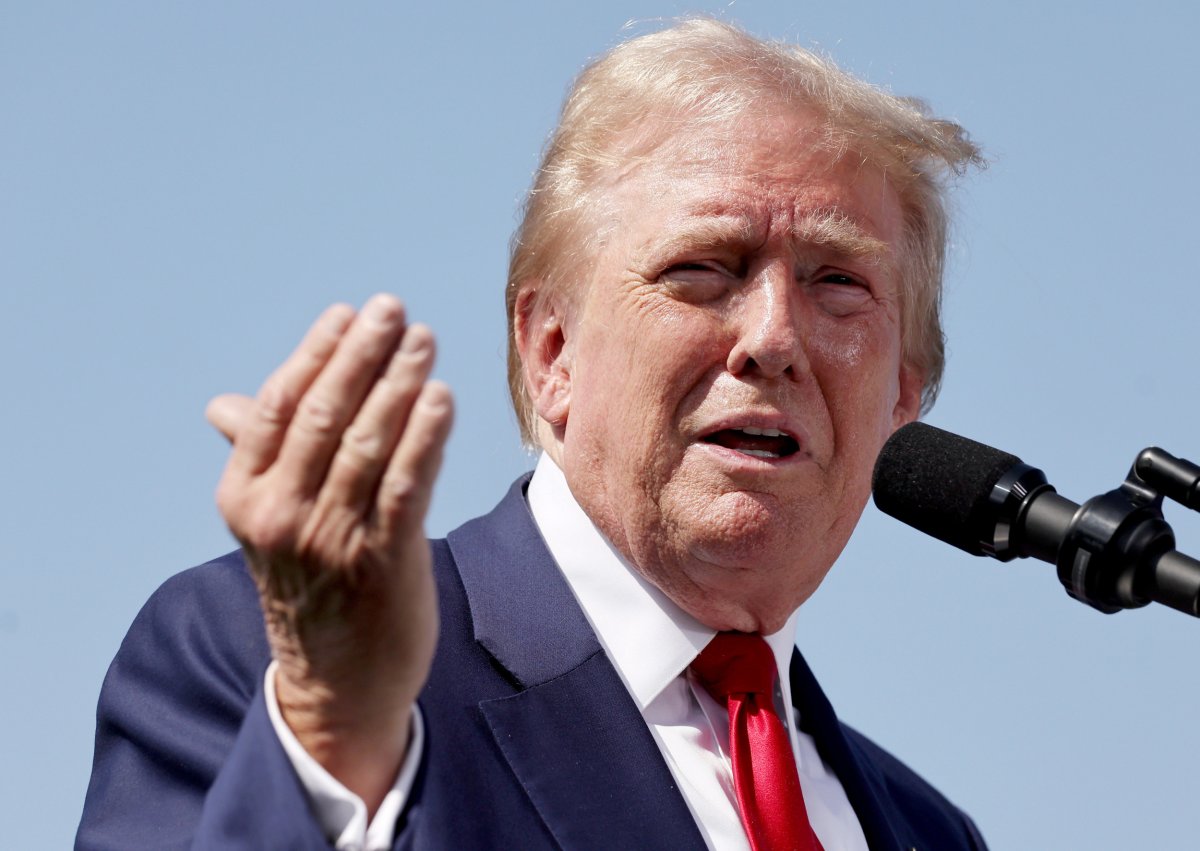
Former President Donald Trump speaks in Rancho Palos Verdes, California on September 13, 2024. Trump has called for the Federal Reserve to not cut interest rates before the election, but not all Republicans agree. Experts…
Former President Donald Trump speaks in Rancho Palos Verdes, California on September 13, 2024. Trump has called for the Federal Reserve to not cut interest rates before the election, but not all Republicans agree. Experts told Newsweek why some Republicans may be publicly disagreeing with Trump over the issue.
More
Mario Tama/Getty Images
The Fed operates independently from the White House or Congress and has worked to maintain its apolitical reputation. By cutting rates this week, Fed Chair Jerome Powell is likely to draw the ire of Trump, who is on record saying that the president should exert direct control over the central bank.
The Fed should focus on data, not questions of politics, when deciding whether to cut interest rates, Justin Wolfers, a professor of economics and public policy at the University of Michigan, told Newsweek. Not cutting rates out of concerns of appearing political would be a political decision itself, he said.
“The best way to avoid appearing political is to not be political,” he said.
He continued: “That means responding to the data, rather than the electoral cycle, or the demand of either side of politics. And at the present moment, the data suggest that we’re currently stuck with interest rates that are too high. The Fed raised rates because it needed to bring inflation down. Inflation is now back near the Fed’s target. It follows that the Fed needs to cut rates.”
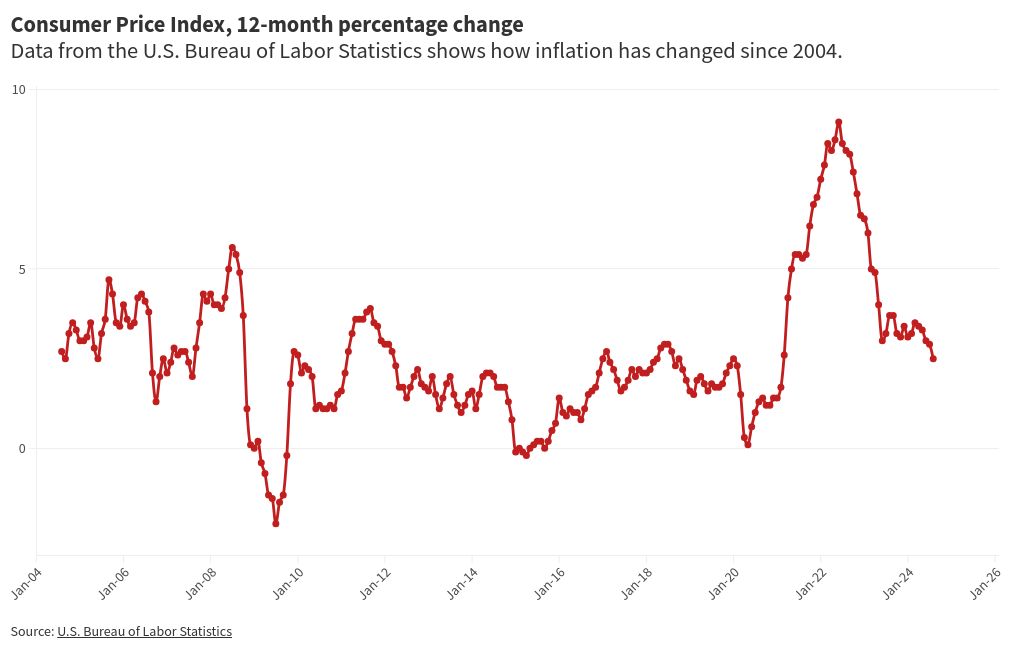
Robert Treist, a professor of economics at Northeastern University who previously served as vice president at the Federal Reserve Bank of Boston, agreed that everybody agrees the Fed must not be political in making decisions, but said considering the election at all would bring politics into the equation.
“The case for cuts is extremely clear—it would be political to not do a rate cut because on the merits of the argument indicate there should be a rate cut. The only reason would be political considerations,” he said.
In August, the Consumer Price Index, viewed as the gold standard for inflation readings, rose by just 0.2 percent, bringing inflation down to 2.5 percent, its lowest since March 2021 and inching closer to the Fed’s 2 percent target. Other recent economic data has buttressed support for the idea that inflation is cooling.
There is some historical precedent for the Fed adjusting interest rates ahead of an election.
In 2008, with the economy on the brink after the collapse of Lehman Bros., the Fed cut interest rates by 50 basis points on October 29, less than one week before voting day. In 2004, interest rates were increased by a 25 basis points on September 21.
Economists are split over whether Wednesday’s cut will be 25 basis points or a larger, 50 basis point move.
In July, Powell rejected the idea that the Fed would make any politically-motivated decisions, even if it had to cut rates ahead of the election.
“Our undertaking is to make decisions when and as they need to be made, based on the data, the incoming data, the evolving outlook and the balance of risks, and not in consideration of other factors, and that would include political factors,” he said before the House Financial Services Committee.
He said the Fed has a “long history” of being politically independent in election years and it is “just not appropriate for us to get into the business of thinking about election cycles at all, one way or the other.”
Why Cut Now?
Inflation-indexed bonds and other market indicators make it “clear” that Wall Street now believes it is time to start cutting rates, Wolfers said. He noted that not doing so would “threaten our current economic recovery” by leaving the country with rates that are “too high.”
Triest said the Fed did not start cutting rates earlier because it was not confident that inflation, while dropping, was on target to reach the 2 percent goal. A case could have been made for cuts at the July meeting, he said, but the board wasn’t comfortable with doing so at the time and wanted more data to digest.
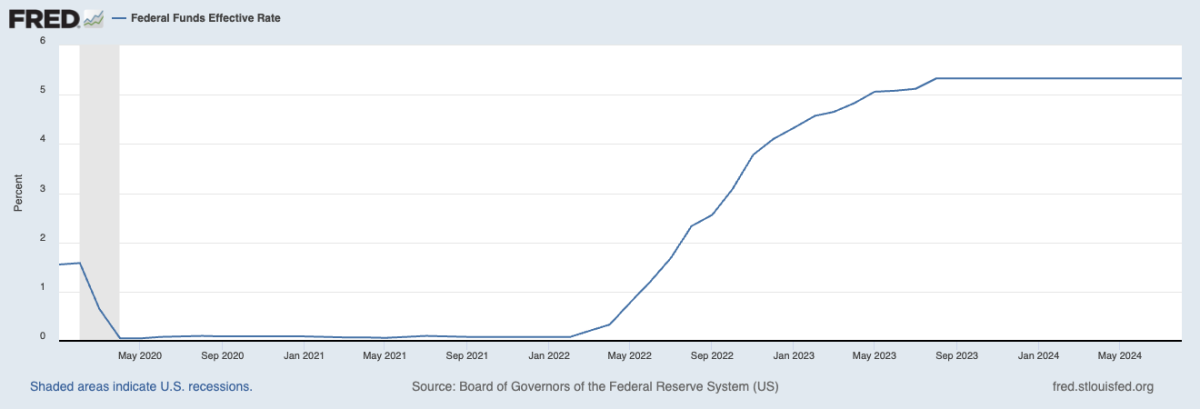
The federal funds rate, from January 2020 until August 2024.
The federal funds rate, from January 2020 until August 2024.
St. Louis Fed
The difference in September is that the labor market has shown some signs of developing weaknesses, creating an “increasingly strong case” for interest rate cuts.
“I think the big reason for the [Fed] to be cautious in cutting the federal funds rate is that they want to be very sure that everyone recognizes that the Fed is committed to 2 percent interest rate target,” he said.
“If they did it before it was clear to everybody, that might have created the perception on the part of the public that the commitment wasn’t ironclad.”
However, keeping rates unchanged poses its own problems, he said. Consequences of waiting too late is a greater risk of a recession and the possibility of a “more substantial increase in unemployment rate” than there would otherwise be. It is “quite clear” that recent data shows an “extremely strong case” for reducing the rates during the September meeting, Triest said.
Both Wolfers and Triest outlined ways the Fed can instill confidence among the American public that their decisions are made based on data, not politics.
Wolfers offered the central bank the following advice: “Follow the data and ignore the electoral calendar. As it cuts rates, it should explain why. And the current macroeconomic data are sufficient that it’ll be easily able to explain why its moves are appropriate.”
Triest added that Jerome Powell can emphasize that the Fed’s decision is “very data driven and that the Fed responds to” current data using its knowledge about macroeconomics. They can point out the exact pieces of data that contributed to their decision, he said.
The looming cut is unlikely to decide the election, Klink, the Republican strategist said. Republicans can frame the cut as “too little, too late” while continuing to tie high food prices and interests rates to Democratic spending policies, he added.
“A quarter-point cut, while nice, won’t help American consumers or those trying to buy a home. Voters, especially in swing states, overwhelmingly blame Democrats for high prices. This reality is a major red flag for Kamala Harris, as voters have little faith that the Harris-Walz ticket has a solution,” Klink said.
While Harris and the Democrats will surely welcome a rate-cut cycle heading into a close election, some in the party have been calling on Powell to lower rates for months.
Senators Elizabeth Warren of Massachusetts and Sheldon Whitehouse of Rhode Island are among those Democrats who wanted earlier cuts, sending a letter to Powell in March warning that the current relatively high interest rates were contributing to increasing energy costs for consumers.
Warren and Whitehouse, joined by Senator John Hickenlooper of Colorado, then came out on Monday and urged Powell to lower interest rates by 75 basis points, a cut that is larger than virtually anyone is expecting. The delays in cutting rates have “threatened the economy and left the Fed behind the curve,” they wrote.
“If the Fed is too cautious in cutting rates, it would needlessly risk our economy heading towards a recession. A number of economists have warned of this risk since July,” they wrote.
Source link : http://www.bing.com/news/apiclick.aspx?ref=FexRss&aid=&tid=66ea995ca8be4403b9d3526e29497c58&url=https%3A%2F%2Fwww.newsweek.com%2Ffederal-reserve-interest-rates-donald-trump-republicans-election-1954802&c=681182632015659837&mkt=en-us
Author :
Publish date : 2024-09-17 22:00:00
Copyright for syndicated content belongs to the linked Source.
